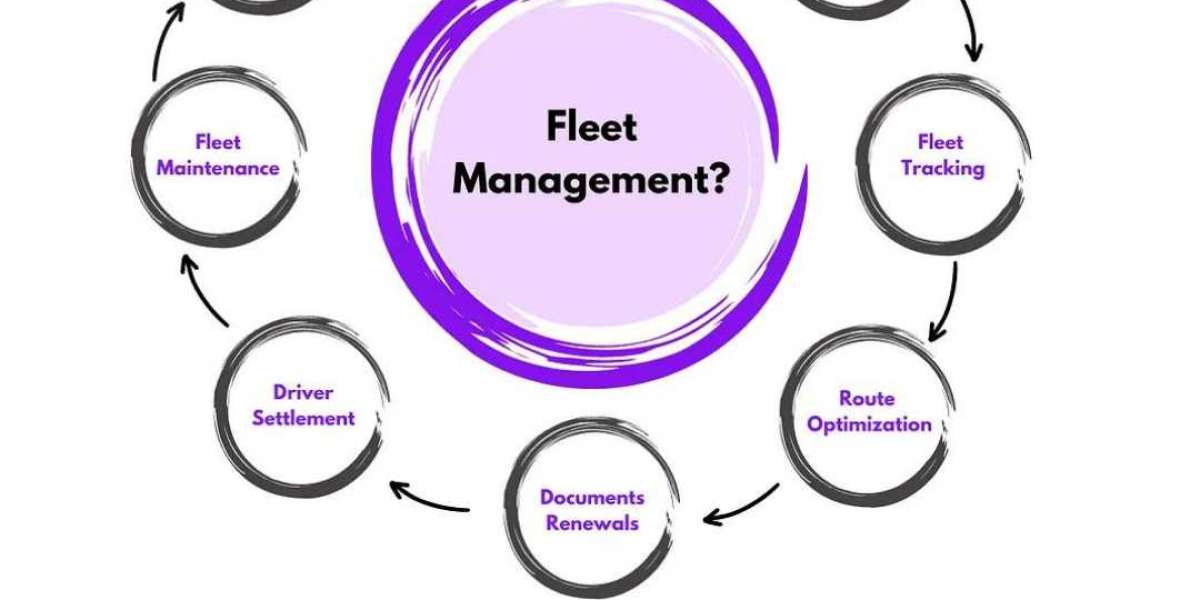Introduction.
Managing a fleet business comes with a myriad of challenges, from ensuring timely deliveries to maintaining vehicle health. In such a scenario, a GPS tracking system becomes indispensable. Not only does it help in keeping tabs on vehicle locations, but it also plays a crucial role in overall fleet management. This article delves into how the best GPS tracking software can cater to your fleet business needs, enhance efficiency, and drive growth.
What is a GPS Tracking System?
A GPS tracking system is a technology that uses the Global Positioning System to determine and track the precise location of a vehicle. The basic components include a GPS receiver, a data transmitter, and a software interface. When a vehicle is equipped with this system, it continuously sends its location data to a central server, allowing real-time monitoring.
Benefits of a GPS Tracking System for Fleet Management.
Improved Efficiency:
One of the standout benefits of implementing a GPS tracking system is the significant improvement in operational efficiency. By monitoring routes and traffic conditions, fleet managers can optimize travel paths, reduce idle times, and ensure timely deliveries.
Enhanced Safety:
Safety is paramount in fleet management. With GPS tracking, you can monitor driver behavior, enforce safe driving practices, and quickly respond to emergencies. Features like speed alerts and accident detection further bolster the safety of your fleet.
Cost Savings:
Investing in a GPS tracking system can lead to substantial cost savings. Reduced fuel consumption, lower maintenance costs, and minimized unauthorized vehicle use are just a few ways this technology can positively impact your bottom line.
Key Features of an Effective GPS Tracking System.
Real-Time Tracking:
Real-time tracking allows fleet managers to view the exact location of their vehicles at any given moment. This feature is essential for dynamic route planning and immediate response to any issues that arise on the road.
Geofencing:
Geofencing creates virtual boundaries for your vehicles. When a vehicle enters or exits these predefined areas, alerts are triggered, enabling better control over vehicle movements and ensuring compliance with designated routes.
Historical Data Analysis:
Historical data analysis provides insights into past vehicle performance, route efficiency, and driver behavior. By examining this data, fleet managers can identify trends, address recurring issues, and make informed decisions to improve operations.
Understanding Fleet Management Systems:
A fleet management system encompasses all the technologies and processes used to manage a fleet of vehicles. Its primary purpose is to streamline operations, enhance productivity, and ensure compliance with regulations. Integrating a GPS tracking system into your fleet management setup amplifies these benefits, providing a comprehensive view of your fleet’s performance.
Choosing the Right GPS Tracking Software for Your Fleet.
Assessing Your Needs:
Before selecting a GPS tracking software, it’s crucial to assess your specific needs. Consider factors such as the size of your fleet, the types of vehicles, and the unique challenges you face. This assessment will guide you in choosing a solution that fits your business perfectly.
Comparing Different Solutions:
With numerous GPS tracking solutions available, comparing their features, usability, and customer support is essential. Look for software that offers real-time tracking, geofencing, and detailed analytics, along with reliable customer service and support.
Spotlight on Secure Path Premium:
Secure Path Premium is a top-tier GPS tracking software known for its robust features and user-friendly interface. It offers real-time tracking, comprehensive reporting, and seamless integration with other fleet management tools. Users have praised its reliability and the substantial improvements in fleet efficiency and safety it delivers.
Fuel Tracking Systems: A Crucial Component.
Importance of Fuel Tracking:
Fuel is one of the largest expenses in fleet management. A fuel tracking system helps monitor fuel consumption, detect fuel theft, and optimize fuel usage. Integrating this with your GPS tracking system provides a holistic approach to managing fuel costs and improving overall efficiency.
How it Integrates with GPS Tracking:
Fuel tracking systems can be integrated with GPS tracking to provide real-time fuel consumption data alongside vehicle location. This integration allows fleet managers to correlate fuel usage with driving behavior and route choices, leading to more informed decisions and cost savings.
Case Study: Shahin Sira Dubai:
Shahin Sira Dubai, a leading fleet service provider, implemented a comprehensive GPS tracking system, including Secure Path Premium and a fuel tracking system. The results were impressive: a 20% reduction in fuel costs, improved delivery times, and enhanced driver safety. This case study highlights the tangible benefits of integrating advanced tracking technologies into fleet management.
Overcoming Common Challenges in Fleet Management.
Technical Issues:
Adopting new technologies can sometimes lead to technical issues. Ensuring you have a reliable support team and investing in user training can mitigate these challenges, ensuring a smooth transition.
Driver Resistance:
Drivers may initially resist tracking systems due to privacy concerns. Transparent communication about the benefits, coupled with training sessions, can help alleviate their concerns and foster acceptance.
Future Trends in GPS Tracking and Fleet Management.
Technological Advancements:
The future of GPS tracking and fleet management looks promising, with advancements like AI-driven analytics, automated reporting, and enhanced connectivity on the horizon. These technologies will further streamline operations and enhance decision-making capabilities.
Industry Predictions:
Industry experts predict a surge in the adoption of integrated fleet management solutions. The focus will be on creating more efficient, safer, and cost-effective operations through the use of advanced tracking technologies.
How to Get Started with GPS Tracking for Your Fleet.
Step-by-Step Guide:
- Assess Your Needs: Identify what you need from a GPS tracking system.
- Research Solutions: Compare different software based on features and reviews.
- Plan Implementation: Develop a detailed implementation plan, including timelines and training sessions.
- Install and Test: Install the system and conduct thorough testing.
- Monitor and Optimize: Regularly monitor the system's performance and make necessary adjustments.
Tips for Smooth Implementation
- Engage stakeholders early in the process.
- Provide comprehensive training for users.
- Start with a pilot program before full-scale implementation.
Maximizing ROI from Your GPS Tracking System.
Best Practices:
To maximize ROI, ensure you’re utilizing all features of your GPS tracking system. Regularly review data, optimize routes, and keep the software updated to leverage new functionalities.
Measuring Success:
Measure success through key performance indicators such as fuel savings, improved delivery times, and enhanced vehicle safety. Regularly assess these metrics to gauge the effectiveness of your GPS tracking system.
Conclusion:
In conclusion, a GPS tracking system is a vital tool for any fleet business, offering enhanced efficiency, safety, and cost savings. By carefully selecting the right software and integrating it with your overall fleet management system, you can drive significant improvements in your operations. Whether you choose a solution like Secure Path Premium or another top-tier software, the benefits are clear and substantial.
FAQs
- What are the primary benefits of a GPS tracking system for fleets?
- Improved efficiency, enhanced safety, and cost savings are the primary benefits of a GPS tracking system. - How does a fuel tracking system work with GPS tracking?
- A fuel tracking system monitors fuel consumption and integrates with GPS tracking to provide real-time data, helping manage fuel costs effectively. - What should I consider when choosing a GPS tracking software?
- Assess your needs, compare features, usability, customer support, and ensure the software can integrate with your existing systems. - How can I overcome driver resistance to GPS tracking systems?
- Transparent communication about the benefits, coupled with training sessions, can help alleviate privacy concerns and foster acceptance. - What future trends can we expect in fleet management technology?
- Advancements like AI-driven analytics, automated reporting, and enhanced connectivity are expected to revolutionize fleet management, making it more efficient and cost-effective.







